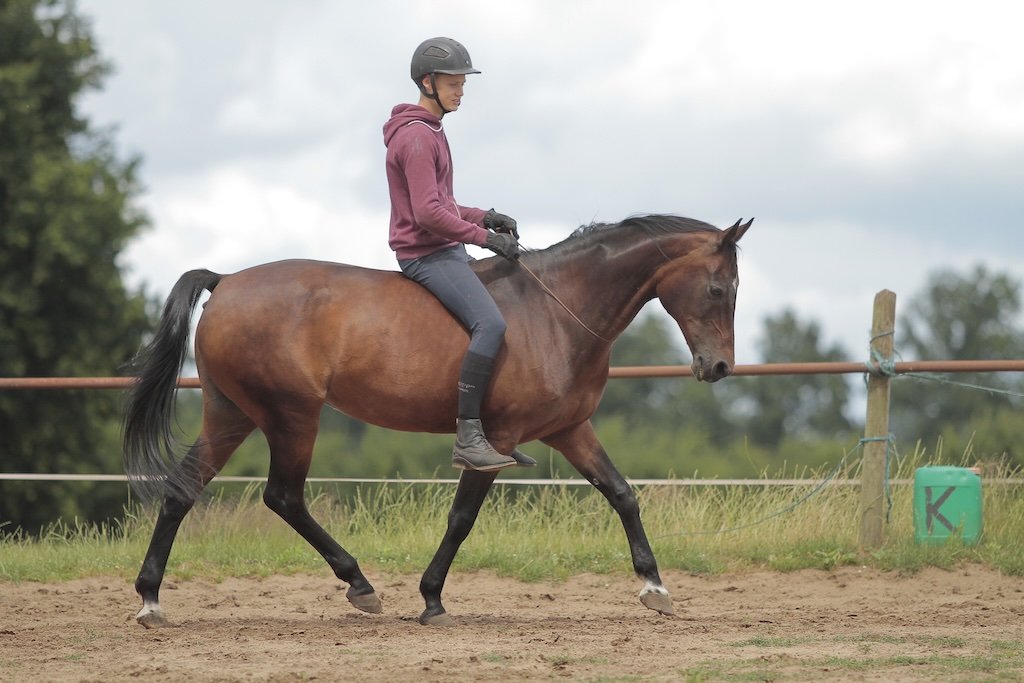Riding bareback – yes or no?
Generally, it's better to avoid riding without a saddle, but how (un)comfortable the horse will be with a bareback rider, will depend on many factors.
If riding without a saddle causes the horse to tense up, it's best to avoid it.
A question that often comes up is whether or not it's ok to ride the horse without a saddle. As always, the answer will be – it depends. Riding bareback can be a good opportunity for the rider to be better balanced and to learn how to better use his core muscles, but it can have negative effects on the horse.
Saddles were invented for a reason and they serve a very important purpose. Their job is to distribute the weight of the rider on the horse's back in a way most comfortable to the horse. The pressure that would otherwise be concentrated around the area of the rider's seat bones, is distributed over a larger area of the horse's back when the saddle is used. When a rider sits on a horse with no saddle, the pressure of his weight will be more concentrated, which can cause discomfort. How well the horse can tolerate that discomfort without negative concequences, depends on a few different factors.
A rider that is well balanced and has a good seat, will be easier to carry than a novice rider. The same goes for a lighter rider. Usually, riding bareback at the walk will be easier (for both horse and rider) than in trot or canter. As soon as the rider starts to lose balance, the horse has to compensate, which creates stiffness and poor posture. How bothered the horse will be with the unevenly distributed pressure will also depend on how muscled the horse's back is and how good he is at moving in a healthy posture. A horse with a healthy back will have an easier time, but if the horse has any back issues the pressure points created by the seat bones might be too much for him. The concentrated pressure can often cause the horse to tense up his back muscles, bring the head up and move in a stiff way. If this is the case, then riding without a saddle is going to cause problems in the long run. If, however, the horse is able to maintain a healthy posture, bareback riding will not be as bad. That said, after a while, the pressure points will cause discomfort, regardless of how well the horse's back is muscled. When this happens, most horses will start to move in a worse posture and this is your cue to get off.
Riding without a saddle will be less detrimental to a well trained horse with a healthy back.
Generally speaking, short rides, mostly in walk are ok, especially if the horse has well developed back muscles and knows how to carry himself. If the horse is in rehab or is only starting to develop good muscling and a healthy posture, avoid adding the extra challenge of a bareback rider.

